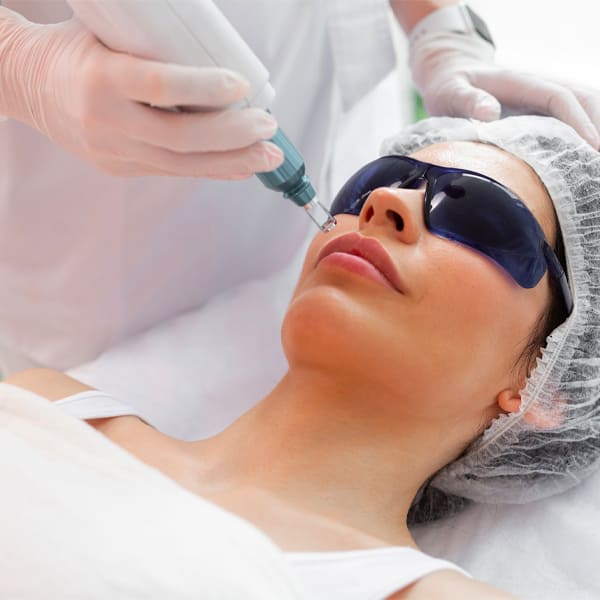Melasma, a common skin condition characterized by dark patches on the face can affect individuals of all skin types. While it is a harmless condition, the impact on one’s self-esteem can be significant. In this blog post, we’ll explore the causes of melasma, its common triggers, and effective treatment options to help you regain confidence in your skin’s appearance.
Understanding Melasma:
Melasma is a pigmentary condition that results in black or dark brown patches on the face. These patches often appear on the forehead, cheeks, nose, upper lip, and chin, forming symmetrical patterns.
Melasma Causes:
Sun Exposure: Ultraviolet (UV) rays from the sun stimulate the production of melanin, contributing to the development of melasma.
Hormones: Hormonal changes, such as those during pregnancy (chloasma or “mask of pregnancy”) or while taking birth control pills, can trigger melasma.
Genetics: There is a genetic predisposition, and individuals with a family history of melasma are more likely to develop the condition.
Melasma Treatment Options
Treatments for melasma include topical, oral, procedures, and combination treatments.
Sun protection is the first and most important step in the treatment of melasma. Incorporating a broad-spectrum sunscreen with a high SPF into your daily skincare routine is crucial. Choose a sunscreen that protects against both UVA and UVB rays, and reapply it every 3-4 hours.
TOPICALS
Several topical treatments are available that help with melasma. Most commonly used agents are hydroquinone, kojic acid, alpha arbutin, Glycolic acid, Retinoids, vitamin C are known for their skin-lightening properties. There are various new agents that have been used either alone or in combination. However, it’s essential to use these treatments under the guidance of a dermatologist to ensure they are safe and effective for your skin type.
Chemical Peels:
Chemical peels involve the application of a chemical solution to exfoliate the outer layer of the skin, revealing a smoother, more even complexion. Dermatologists often recommend Chemical peels containing ingredients like alpha hydroxy acids or beta hydroxy acids like Glycolic, Salicylic, Jessner′s, TCA, Azelaic Acid peels or various new peels depending on the skin type and severity of melasma treatment.
Laser Therapy:
Laser therapy, specifically targeted laser treatments, can be effective in treating melasma by breaking down excess melanin. This non-invasive procedure is performed by a dermatologist and may require multiple sessions for optimal results.
Oral Medications:
Oral tranexamic acid, antioxidants like vitamin C, E etc, are used for improvement of melasma.
Combination Therapies:
Dermatologists often recommend a combination of treatments for melasma to address different aspects of the condition. Combining topical treatments with in-office procedures can provide comprehensive and long-lasting results.
Melasma can be a challenging condition to manage, but with the right approach and professional guidance, improvements in skin tone and texture are achievable. Remember, effective treatment often involves a combination of preventive measures, lifestyle changes, and targeted therapies. If you’re dealing with melasma, consult with a dermatologist to create a personalized treatment plan that addresses your unique skin concerns and helps you regain confidence in your complexion.
At FMS Skin and Hair Clinics, we have our signature Melasma Protocol that gives significant improvement in combination with other treatment modalities. As Best Cosmetic skin clinic in Hyderabad, We provide all advanced Laser skin Care treatments, customized according to your skin needs. Consult as for all advanced skin and Hair treatments.
For Appointment Booking. Please call us or WhatsApp at 8885060760 Or Email Us at [email protected]

Author: Dr.Gowthami









